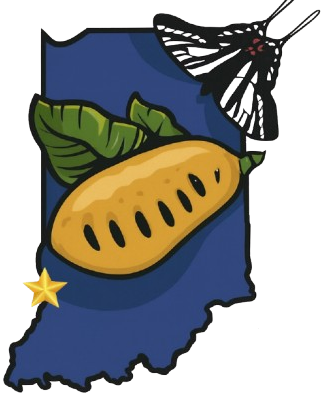Celebrating North America’s Native Pawpaw
Our festival is a community celebration of the pawpaw — a delicious, custardy fruit with tropical vibes that’s actually native to our forests. We bring together growers, food trucks, artisans, musicians, and families for tastings, hands-on demos, and good times.
What’s a pawpaw?
Pawpaw (Asimina triloba) is the largest edible native fruit in the United States. Its flavor is often compared to a blend of banana, mango, and pineapple — rich, creamy, and perfect for puddings, smoothies, and ice cream.
Native & Hardy
Pawpaws are native to the eastern U.S. and thrive along rivers and woodlands as understory trees.
Seasonal Treat
Peak season runs late summer into early fall — typically August through October, depending on latitude.
Ecosystem Friend
Pawpaw patches support wildlife and serve as the host plant for the zebra swallowtail butterfly.
Our mission
We’re here to put this incredible native fruit back on the map — by connecting local growers and makers with our community, supporting small farms, and teaching folks how to plant, cook, and celebrate pawpaws sustainably.
Rooted in history
Indigenous communities cultivated pawpaws long before European contact. Early Americans loved them too — they were planted at historic homes and shared across the Atlantic, and explorers famously relied on pawpaws during long treks.
Why pawpaws matter
Low-Input Orchards
Pawpaws can be grown with comparatively fewer inputs than many orchard crops, making them a promising option for diversified small farms.
Local Flavor
Because pawpaws don’t ship well, festivals like ours are often the best place to taste them fresh and discover value-added products.
Education First
We offer tastings, cooking demos, grower Q&A, and guided walks to help you ID trees, understand pollination, and plant your first pawpaw.
What to expect at the festival
- Taste flights of different cultivars and recipes
- Chef demos, jam/ice-cream samplings, and “Best Pawpaw” contests
- Talks on planting, pruning, grafting, and soil & site selection
- Kids’ activities, live music, local art & craft market
- Native plant and pawpaw sapling sales (while supplies last)
FAQs
Is pawpaw the same as papaya?
No. Pawpaw (Asimina triloba) is a temperate North American fruit in the custard-apple family. Papaya (Carica papaya) is a tropical fruit from a different family.
When is pawpaw season?
Generally late summer into fall. In many places the fruit ripens from August through October.
What does it taste like?
Think tropical custard — many people describe notes of banana, mango, and pineapple.
Can I grow pawpaws?
Yes! They’re hardy in much of the eastern U.S. You’ll usually want two different cultivars for good pollination and a partially shaded site when young.
Join the celebration
Ready to be part of it? Apply to vend, or sign up to volunteer and help us spread the pawpaw love.
Contact
Questions? Email indianapawpawfestival@gmail.com.
